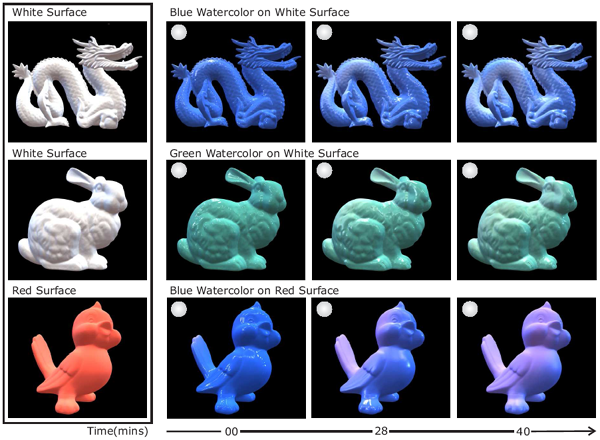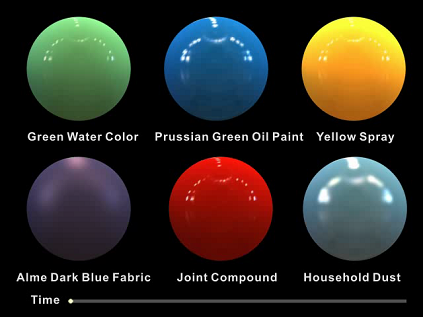About the DatabaseThe properties of virtually all real-world materials change with time, causing their BRDFs to be time-varying. However, none of the existing BRDF models and databases take time variation into consideration; they represent the appearance of a material at a single time instance. In this work, we address the acquisition, analysis, modeling and rendering of a wide range of time-varying BRDFs.Our primary contributions in this work are
The following image demonstrates some of the effects our data and models capture:  The fitted BRDF parameters can be used directly to render the measured materials as their appearance changes over time. The following video shows spheres rendered with the parameters we have fit to the data of six of the samples we have measured: While the measured data and fitted BRDF parameters can be used by themselves, our TVBRDF factorization enables us to extend the above effects to novel materials and surfaces. The following image that shows renderings with both measured blue watercolor on white paper data as well as synthesized novel green watercolor on white paper and blue watercolor on red paper data demonstrates this:  Included in the database are the BRDF measurements as well as the parameters of the BRDF models we have fit to the data. More detailed information about the database can be found here. The details of our acquisition, modelling and fitting can be found in the following papers:
|
|
TVBRDF Database Home Contact: tvbrdf@cs.columbia.edu Last modified: 06/03/2007 |
